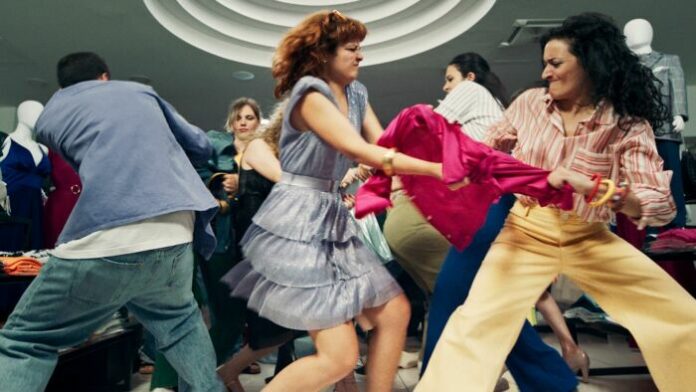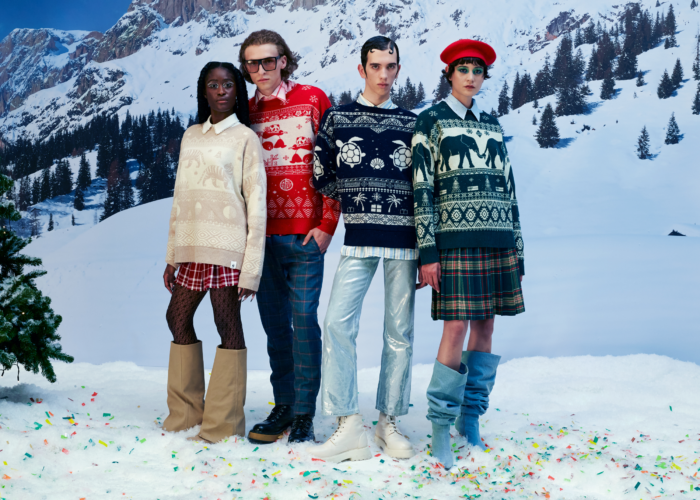
In the new WWF #ThePandaWeAreWe video, there is a scene of shopping sprees, reminiscent of Black Friday, the discount period. Some people are competing, literally tearing cheap clothes out of their hands, as if being able to grab them was a vital need, a necessity. The image is deliberately excessive, a symbol of the over-consumption disguised as bargains that peaks at this time of year through numerous online and in-store purchases. In fact, this scene is emblematic of the paradox we are living: we compete for clothes and fashion products, which we buy perhaps at a low price, only to wear them very few times.
Precisely in the week of Black Friday, when we are constantly exposed to offers of discount products, the WWF reminds us that the Planet does not give discounts and wants to make people think about the impact of their shopping choices, which ostensibly save money, but make Nature and our health pay a high price.
Behind the very low cost that we pay to bring home that garment are in fact the use of low-quality raw materials and chemical additives, high greenhouse gas emissions, the use and waste of resources such as soil and water and the pollution of aquifers and aquatic ecosystems, but also the exploitation of workers who often live on the other side of the world.
In the last 20 years, the time spent on clothes has decreased by 36%, with each garment used on average only seven or eight times. About 5 million tonnes of clothes are thrown away every year in Europe, about 12 kg per person ending up in incinerators and landfills, inside and outside Europe. It is estimated that only 1% of all clothes in Europe are recycled into new products.
Textile production and consumption are directly linked to soil degradation, conversion of natural ecosystems into cultivated land, pollution, climate change and loss of biodiversity. The textile industry ranks fourth in terms of environmental impact, after food production, construction and mobility. Some 175 million tonnes of primary raw materials are used to produce the clothing, footwear and home textiles purchased by European households, equivalent to 391 kilos per inhabitant, 40% of which is attributable to clothing. These figures rank textiles as the fifth largest consumer sector in Europe in terms of primary raw material use.
Textile production also requires large expanses of land: 180,000 square kilometres are needed each year, of which only 8% is in Europe. More than 90% of the land consumption takes place outside, mainly in China and India. The textile sector thus becomes the third largest user of land, after food production and the housing sector.

Per person, the consumption of textiles requires 400 m2 of land, 9 m3 of water, 392 kg of raw materials and the emission of 270 kg of CO2. Consumerism, a central element of a perverse economic system aiming at infinite growth, is perhaps the most surprising phenomenon in the history of human civilisation. It goes beyond the aspect of high consumption, it is a way of relating to things, a set of attitudes and habits that end up shaping people and their behaviour. We have made and are making unsustainable use of natural resources: the Planet on which we live cannot sustain the impact of our activities and excess consumption of resources for much longer.
Fortunately, there are many ways in which the impact of human action on the planet can be reduced, including in the textile sector. At the garment design stage, for example, careful selection of the quality of materials increases the strength and colour fastness of fabrics, ensuring their durability and repairability, thus their longevity. The transition to a sustainable business model that optimises the use of resources is now more necessary than ever, along with increased reuse and recycling of materials. Consumers too can play their part by buying right, paying more attention to timeless design (vintage never goes out of fashion), product care and repair service offerings.
WWF Conservation Collection
This Christmas, the WWF launched a new line of Christmas-themed jumpers, scarves and hats made of 100% recycled and sustainable wool, with an exclusive design and created in collaboration with Rifò, a company that creates high-quality garments and accessories using regenerated and recyclable textile fibres. In particular, the old garments from which the wool for WWF garments is obtained are sorted by colour, so there is no need for new dyeing, which is the most impactful process in the entire fashion industry. This type of production saves 99% water, 76% energy and 92% CO2.

The WWF Conservation Collection is dedicated to four iconic species: Tiger, Panda, Elephant and Sea Turtle thus become the new symbols of our Christmas, and the choice to buy a product from the line represents a concrete and conscious action to support projects that aim to safeguard these species. The WWF Conservation Collection is online at wwf.it/shop.



































